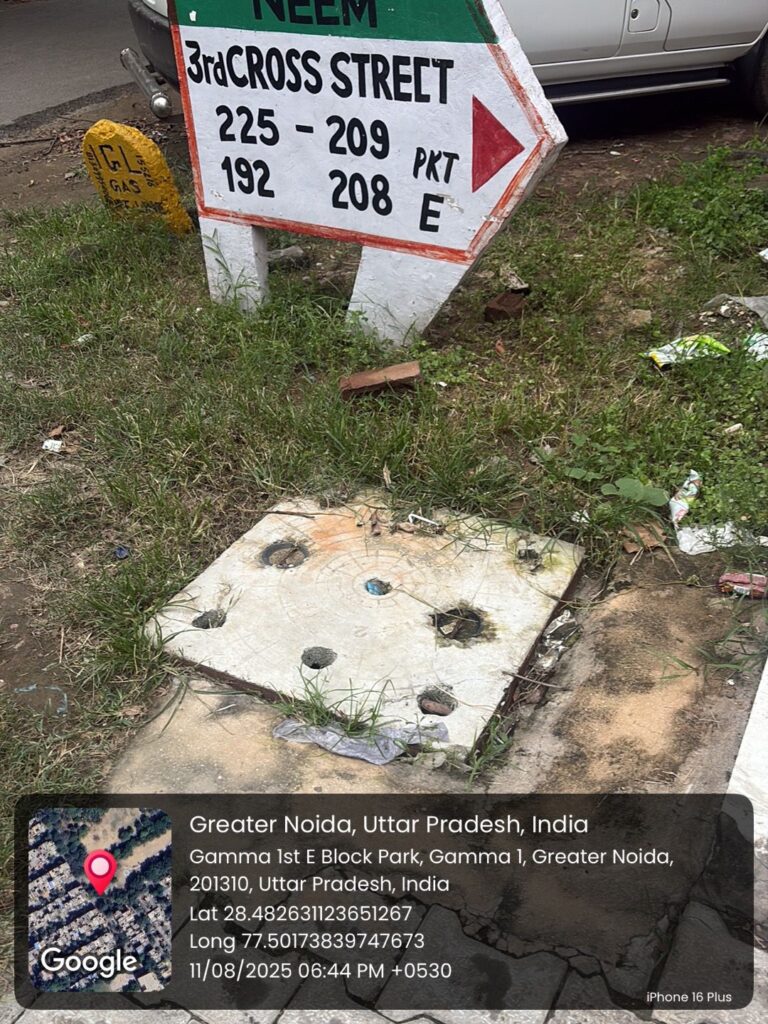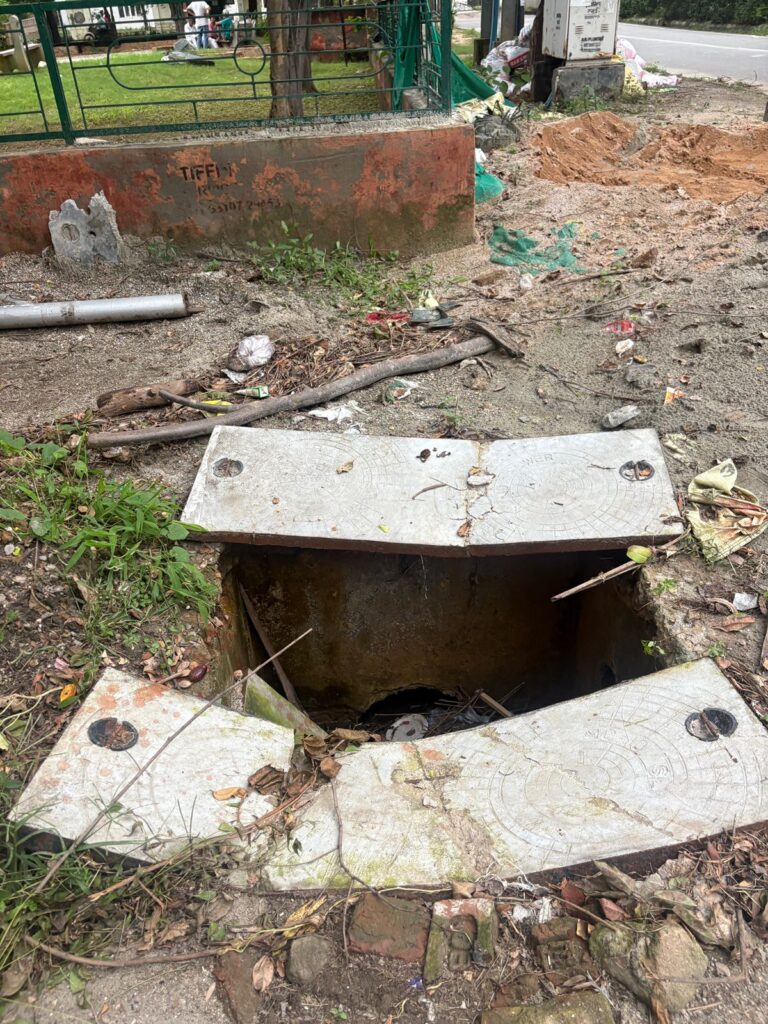Greater Noida: A seemingly small design change in the city’s water drain chamber covers has triggered big questions about possible corruption within the Greater Noida Industrial Development Authority (GNIDA).
Residents have formally appealed to ACEO Lakshmi V.S. and ACEO Prerna Singh to launch an urgent investigation into why the number of holes in new drain covers has been drastically reduced from 25 in older models to just 5–6 in the newly installed ones.
Previously, the 25-hole design allowed rainwater to drain swiftly, preventing waterlogging. Now, with fewer holes, locals fear severe flooding during the monsoon, especially as the city’s population and infrastructure demands continue to grow.
Which engineer approved such an illogical design? We want their name made public?
residents demanded, questioning whether the change was merely poor planning or part of a deliberate ploy.
Several believe the move may be linked to a “planned failure” strategy, reducing drainage efficiency to create future emergencies, thereby justifying new tenders and contracts for replacement work.
This is not just negligence; it smells of a scam.
Resident Leader, Adding that the waterlogging can cause property damage, health hazard and millions in unnecessary spending.
Locals are now calling for technical audits, public disclosure of approval documents, and strict accountability for those responsible.
Sidebar: Why Drain Cover Design Matters
Urban drainage covers are designed with multiple openings to let rainwater flow quickly into underground stormwater drains. A higher number of holes means faster water evacuation, reducing the risk of waterlogging. Fewer openings slow drainage, leading to standing water on roads, which can cause flooding, weaken road surfaces, and create breeding grounds for mosquitoes. In growing cities like Greater Noida, even small design changes can have large-scale consequences during heavy rains.



